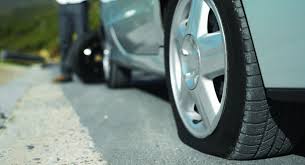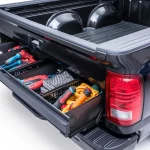Tire Deflation After Sun,Tire pressure loss after sun exposure is a phenomenon that many drivers have experienced. It may seem counterintuitive that tires go flat after sun exposure, but this phenomenon is based on fundamental principles of physics and materials science. Understanding why this happens, what it means, and how to prevent it will protect drivers from unexpected inconveniences and potential safety risks.

The Science Behind How Tire Deflation After Sun
Tires are made from a combination of rubber compounds, steel, and other materials designed to provide durability, flexibility, and strength. However, these materials are sensitive to temperature changes. When a tire is exposed to the sun, the temperature inside the tire increases significantly due to the sun’s radiant heat.Tire Deflation After Sun
Thermal Expansion and Contraction:
As the temperature inside the tire increases, the air molecules inside the tire move faster, increasing the pressure. This is known as thermal expansion. However, when tires cool down, usually when the vehicle is moved into the shade or driven, the air inside the tires contracts and the pressure decreases. This fluctuation can cause the tire to appear deflated, especially if it is already flat or has a small leak.Tire Deflation After Sun
Material Deterioration:
Prolonged exposure to the sun’s UV rays can deteriorate the rubber in tires. This process is called photodegradation and over time it weakens the structure of the tire, making it more susceptible to air leaks and low pressure. The elasticity of the rubber decreases and the tire can lose its ability to maintain proper pressure.Tire Deflation After Sun
Pressure drop mechanism:
Tires naturally lose a small amount of air over time, even when not exposed to heat. Combined with the effects of the sun, this natural drop in air pressure can be exacerbated. Especially in older tires, small cracks in the rubber can appear and once the tire cools, a slow air leak is noticeable.Tire Deflation After Sun
Effects of Low Tire Pressure
Low tire pressure after exposure to sunlight can have several consequences, some of which can affect the safety and performance of your vehicle.Tire Deflation After Sun
Reduced Fuel Economy:
Tires with lower pressure have more rolling resistance and require more engine power to move the vehicle. This increase in force leads to higher fuel consumption, which reduces the vehicle’s overall fuel economy.Tire Deflation After Sun
Increased Wear:
Tires that are constantly underinflated will wear faster. The extra friction caused by increased contact with the road causes uneven tread wear, which shortens tire life and requires early replacement.Tire Deflation After Sun
Safety Risks:
One of the most significant risks associated with low tire pressure is the possibility of a tire puncture. Tires with low pressure can easily overheat and suddenly fail while driving. This situation is dangerous, especially at high speeds, and a puncture can cause you to lose control of your vehicle. Handling and Performance Issues:
Proper tire pressure is essential to maintaining optimal handling and performance. Low tire pressure reduces the vehicle’s ability to grip the road, making it less stable, especially on wet or slippery roads.Tire Deflation After Sun
Prevention and maintenance tips
Regular maintenance and preventative measures are essential to avoid problems associated with tire pressure loss after sun exposure.
Regular tire pressure checks:
It is important to check tire pressure regularly, especially after your vehicle has been exposed to the sun for an extended period. Tire pressure should be checked when the tires are cold for the most accurate readings. If your tires have been exposed to heat, allow them to cool before measuring air pressure.
Proper air pressure:
Make sure your tires are inflated to the pressure level recommended by the manufacturer. This information is usually found in your vehicle’s owner’s manual or on a sticker on the driver’s side door jamb. Do not over-inflate tires, as this can reduce traction and increase wear on the tire’s center tread.
Use of tire covers:
If your vehicle will be parked in direct sunlight for extended periods, consider using tire covers. These covers protect tires from the sun’s UV rays, reducing the risk of photodegradation and associated deflation.
Tire Rotation and Alignment:
Periodic tire rotation and alignment checks help even out tire wear and extend tire life. If tire wear is even, the tire is less likely to have weak spots that can lead to leaks or deflation.
Storage Considerations:
If you’re storing your vehicle for an extended period of time, make sure the tires are properly inflated before storing, and consider placing the vehicle on jack stands to reduce stress on the tires. This will prevent punctured spots and other problems associated with prolonged sun exposure.
Conclusion
Tire pressure loss after exposure to sunlight is a common problem that can seriously impact vehicle safety and performance. By understanding the causes of this phenomenon and taking preventative measures, drivers can keep their tires in top condition and achieve a smoother, safer driving experience. Regular maintenance, proper inflation pressure, and protection from the elements are key to preventing the negative effects of sun exposure on your tires. By being proactive, drivers can avoid the inconveniences and potential dangers associated with low tire pressure and enjoy safer road trips.











